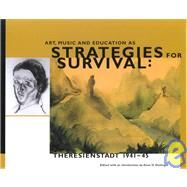Art, Music and Education as Strategies for Survival : Theresienstadt, 1941-1945
, by Dutlinger, Anne D.; Dutlinger, Anne D.; Hajkova, Michaela; Wonschick, Hannelore; Leshnoff, Susan; Rovit, Rebecca; Blodig, Vojtech; Milton, Sybil H.; Moravian College Payne Gallery- ISBN: 9781928746102 | 1928746101
- Cover: Hardcover
- Copyright: 2/1/2001
The Bauhaus and its influences are to be found throughout twentieth-century art and design; the architecture of Walter Gropius and Mies van der Rohe and the art of Paul Klee and Wassily Kandinsky being among the most widely recognized instances. Perhaps the most poignant example of this influence, however, may be understood through the life of a little-known student of the Bauhaus who entered its first class in 1919 -- Friedl Dicker, whom Gropius described as "a distinguished, rare talent ... The multidimensional nature of her talent and her indomitable energy received the highest esteem ..".
Friedl Dicker was a prolific and multitalented artist, producing work in theater, architecture, textiles, graphic design, drawing, painting, and sculpture. In 1926, in Vienna, she founded Atelier singer-Dicker with a classmate Franz Singer. In 1934 she was arrested by the Gestapo for anti-Fascist activities and fled to Prague, where she taught art classes for Jewish refugees. In 1942 she was sent to the Theresienstadt Ghetto, where she secretly taught art to the children







